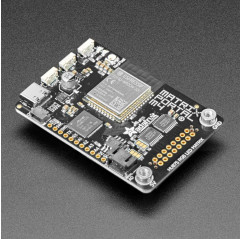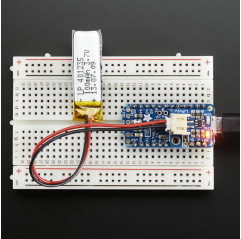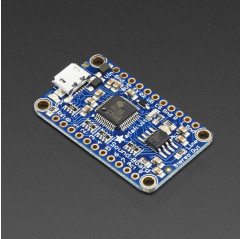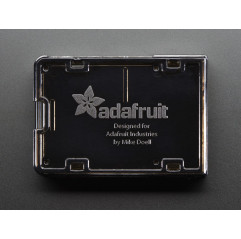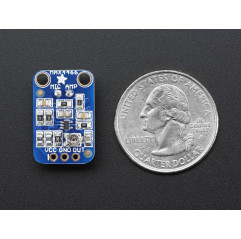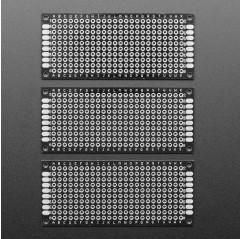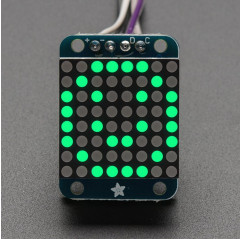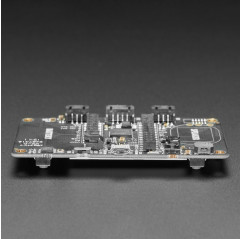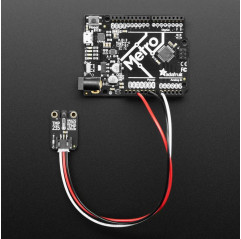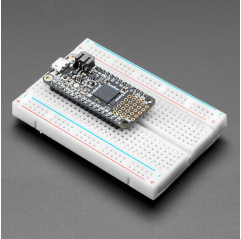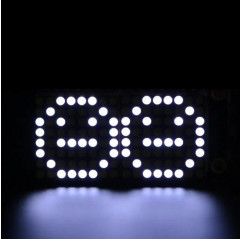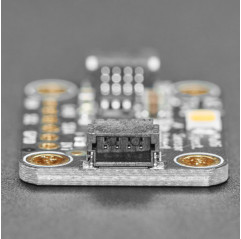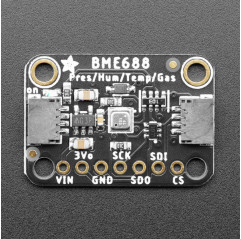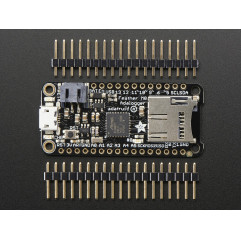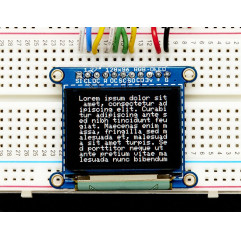With the Adafruit Matrix Portal add-on for RGB Matricies, there's never been an easier way to create powerful Internet-connected LED displays.
Plug directly into the back of any HUB-75 compatible display from 16x32 up to 64x64! Use the included screws to attach the power cable to the power plugs with a common screwdriver, then power it with any USB C power supply. (For larger projects, power the matrices with a separate 5V power adapter)
Then code up your project in CircuitPython or Arduino, the Protomatter matrix library works great on the SAMD51 chipset, knowing that you've got the wiring and level shifting all handled. Here's what you get:
ATSAMD51J19 Cortex M4 processor, 512KB flash, 192K of SRAM, with full Arduino or CircuitPython support
ESP32 WiFi co-processor with TLS support and SPI interface to the M4, with full Arduino or CircuitPython support
USB Type C connector for data and power connectivity
I2C STEMMA QT connector for plug-n-play use of any of our STEMMA QT devices or sensors
JST 3-pin connector that also has analog input/output, say for adding audio playback to projects
LIS3DH accelerometer for digital sand projects or detecting taps/orientation.
GPIO breakouts including 4 analog outputs with PWM and SPI support for adding other hardware.
Address E line jumper for use with 64x64 matrices (check your matrix to see which pin is used for address E!
Two user interface buttons + one reset button
Indicator NeoPixel and red LED
Green power indicator LEDs for both 3V and 5V power
2x10 socket connector fits snugly into 2x8 HUB75 ports without worrying about 'off by one' errors.
The Matrix Portal uses an ATMEL (Microchip) ATSAMD51J19, and an Espressif ESP32 Wi-Fi coprocessor with TLS/SSL support built-in. The M4 and ESP32 are a great couple - and each bring their own strengths to this board. The SAMD51 M4 has native USB so it can show up like a disk drive, act as a MIDI or HID keyboard/mouse, and of course bootload and debug over a serial port. It also has DACs, ADC, PWM, and tons of GPIO, so it can handle the high speed updating of the RGB matrix.
Meanwhile, the ESP32 has secure WiFi capabilities, and plenty of Flash and RAM to buffer sockets. By letting the ESP32 focus on the complex TLS/SSL computation and socket buffering, it frees up the SAMD51 to act as the user interface. You get a great programming experience thanks to the native USB with files available for drag-n-drop, and you don't have to spend a ton of processor time and memory to do SSL encryption/decryption and certificate management. It's the best of both worlds!
Comes with one fully-programmed and assembled MatrixPortal, preprogrammed with a rainbow digital sand demo for 32x64 LED matrices.
Does not come with an RGB Matrix (use any HUB75 compatible matrix) or a USB type C power supply!
TECHNICAL DETAILS
Product Dimensions: 63.3mm x 44.5mm x 16.0mm / 2.5" x 1.8" x 0.6"
Product Weight: 17.0g / 0.6oz






